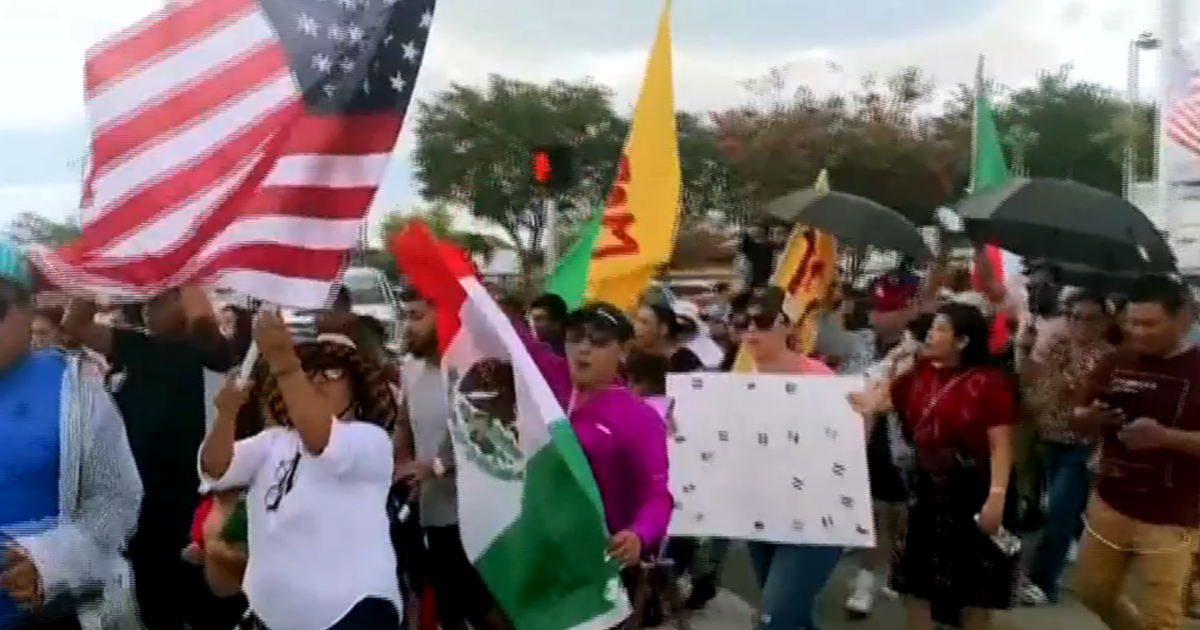In Campus Protests Over Gaza, Echoes of Outcry Over Vietnam
Richard Flacks remembers the challenges of building a protest movement during the Vietnam War as a pillar of the left-wing political and antiwar group Students for a Democratic Society during the 1960s.
“The whole idea of S.D.S. began with the idea of, ‘We need a new way of being on the left, a new vocabulary, a new strategy,’” said Mr. Flacks, who helped write the group’s manifesto, the Port Huron Statement, in 1962. “We knew we were right, and I don’t think we were arrogant about it.”
Sixty years later, Iman Abid sees similar challenges in the war in Gaza between Israel and Hamas. “For so long, we couldn’t get Palestine to be that issue for people to care about,” said Ms. Abid, the organizing and advocacy director at the U.S. Campaign for Palestinian Rights, which works with pro-Palestinian campus organizations. “But now people care about it because they’re seeing it. They’re watching it on their social media. They’re watching it on the news.”
It is too early to know whether the Israeli-Palestinian conflict will define this generation as opposition to the Vietnam War did for many young people more than a half century ago.
But to many who have studied or lived through the Vietnam era, the parallels to the Gaza protests are compelling: a powerful military raining aerial destruction on a small, underdeveloped nonwhite land; a generational divide over the morality of the conflict; a sense that the war represented far broader political and cultural currents; an unswerving confidence — critics might say sanctimony — among students that their cause is righteous.
The differences can be glaring, too, beginning with the terrorist attack by Hamas that set this war in motion, for which there is nothing comparable in Vietnam. The Gaza war is not being fought by the American military, unlike Vietnam, where more than 58,000 Americans died and young men faced a military draft.
Miles Rapoport, a former secretary of state of Connecticut, who joined S.D.S. while studying at Harvard in the 1960s, saw similarities but said the two movements and moments differ in a fundamental way: The United States waded into Vietnam in a show of superpower hubris. Israel, he said, is fighting for its existence after a terrorist attack that killed 1,200 citizens. The current war, he said, “has a lot more moral and philosophical nuance.”
That is reflected in pro-Israel marches and demonstrations to a far greater degree now than was common, particularly on campuses, for supporters of the war during the Vietnam era.
Still, both movements, Mr. Rapoport said, reflect “a kind of instinctive and initial solidarity with the underdog.” He added: “And related is a sense of solidarity with people who are fighting to have their own country and be freed from a kind of colonial existence.”
American campuses have protested over countless causes since Vietnam, notably to oppose apartheid in South Africa and racial injustice after police killings of Black men and women in 2014 and 2020. But a sustained antiwar protest like the one against the Gaza invasion has not been seen for decades.
Loan Tran, a 28-year-old Vietnamese American who is national director of the leftist advocacy group Rising Majority, draws a straight line between Vietnam and Gaza. Mr. Tran’s grandfather, whom he never met, was an American G.I. during the war; his grandmother’s friends fought for North Vietnam against American forces.
“When I hear Palestinians making comparisons to Vietnam and the role of the U.S. and colonialism, it’s really striking for me, and it’s a really poignant connection,” he said. “I feel it in my body, and a lot of people in our Vietnamese community feel it in our bodies, to be resisting war, to be resisting occupation.”
To critics of the Gaza protests, the current movement reflects the excesses, not the virtues, of the Vietnam protests, with chants now that to some suggest genocide against the Jewish people, much as some 1960s protests alienated many Americans by backing North Vietnam against U.S. forces. And those critics also accuse the pro-Palestinian demonstrators of hypocrisy — saying that many of the rallies include side issues that would be antithetical to many Palestinians, like women’s issues and L.G.B.T.Q. rights.
Many supporters of Israel view the movement with a mixture of horror and consternation. Kenneth L. Marcus, the chairman of the Brandeis Center for Human Rights Under Law, a Jewish civil rights institution that is not affiliated with Brandeis University, said the campus demonstrations began even before Israel’s invasion of Gaza occurred.
“There may be some people participating in these protests who think they’re supporting Palestinians, but the movement they are advancing is predominantly an antisemitic movement,” he said, adding that it has its genesis in a celebration of violence. Rather than showing moral strength in the face of campus protests, he said, many university administrators “have responded with weakness and cowardice.”
Those protesting the war in Gaza owe their Vietnam-era forerunners for one legacy: the tactics, from die-ins to chants like “How many kids did you kill today?” that energized both movements. “Students didn’t have much in 1960 to emulate,” said Mr. Flacks, now a professor emeritus of sociology at the University of California, Santa Barbara. “A lot of the tactics invented at that time became part of the tool kit for activism on campuses.”
The degree to which Israel is doing the fighting, not the United States, creates a different dynamic than the protests over Vietnam.
“It’s not a clear conflict which you and I have a stake in,” said Daniel Millstone, a retired lawyer in New York City who was one of the early antiwar crusaders with S.D.S. More students today have seen Israel firsthand, or know students from the region. “But in the last analysis,” Mr. Millstone said, “even if I have family in Israel — and I do — it’s not my show. It’s their show.”
Certainly, the logistics of staging protests are much more manageable today than 60 years ago. Cellphones and social media have simplified the tasks of recruiting and deploying advocates for a cause; to cite just one example, a crowd of antiwar demonstrators descended recently on Grand Central Station in New York, flash-mob style, after getting an electronic alert.
“I compare that to the demonstrations we put on against the war in Vietnam and many other things, which required an enormous amount of top-down planning,” Mr. Millstone said. Modern campus activism is organized via WhatsApp and iMessages. While the major groups protesting over Gaza have national offices, the movement is largely decentralized.
Universities — and the overall makeup of the protesters — are also vastly changed, as are the political pressures and demands on university presidents.
The Vietnam antiwar movement was overwhelmingly white, like most campuses of the 1960s. But campuses in 2023, particularly urban ones, contain far more students of color, many of whom empathize with Palestinians’ status as an embattled population under the control of a more powerful force. And nonstudents are a bigger part of those protesting now.
“Movements don’t come out of nowhere,” said Michael Kazin, a Georgetown University historian who in the 1960s was both a member of S.D.S. and, briefly, its violent stepchild, the Weather Underground. For the Vietnam protesters, he said, the precursors were the 1960 Sharpeville Massacre in South Africa and the civil rights movement. For the Gaza protesters, the antecedents stretch from the anti-Muslim backlash after the Sept. 11 attacks to recent racial injustice protests.
When young protesters descended on Ferguson, Mo., after police officers killed an unarmed Black man in 2014, Palestinians offered advice on social media for coping with tear gas. Today, at the University of California, Santa Barbara, and elsewhere, Black and Latino students are among the leaders of the pro-Palestinian movement, Professor Flacks said.
And both eras reflect the influence of deeply polarizing political leaders, particularly Presidents Lyndon B. Johnson and Richard M. Nixon in the Vietnam era, and Prime Minister Benjamin Netanyahu of Israel, whose hard-line conservatism has given oxygen to campus support for the Palestinian cause.
“Those of us who are my age have direct memories of why Israel was a morally positive framework. It was the haven for people escaping from the worst oppression,” Professor Flacks said. But “what the kids in college now see about Israel is a government led by Benjamin Netanyahu,” which they view as a repressive force supported by established Jewish organizations.
Larry P. Gross, an expert on media and culture at the University of Southern California, said Israeli leaders had not adapted their message, much less policies, to a generation that views Israel not as a besieged Jewish homeland, but as the arbiter of freedom in the Palestinian West Bank and Gaza.
“The Israelis and their P.R. arm fundamentally didn’t understand the degree to which they were losing young people,” he said. “They reflexively played the Holocaust card over and over again,” he added, even as “we went from seeing pictures of Russians bombing Ukraine as a war crime to pictures of Israel bombing Gaza.”
Support for Palestinians among the young, he said, “is going to last. I think it’s one of those generational shifts.”
The last time an antiwar movement faced a generational divide, many young people sat out the 1968 presidential election between Mr. Nixon and Vice President Hubert Humphrey. Mr. Nixon won the Electoral College by capturing four states by fewer than 88,000 total votes.
Professor Kazin recently published an article in the liberal journal The New Republic wondering whether history could repeat itself there, too.
“People like me were opposed to Humphrey, and were happy, in a sense, to see him lose,” he said. “Now, a lot of people are saying they’ll never go for Biden. And it’s not clear who they vote for, if they vote at all.”
Alain Delaquérière and Sheelagh McNeill contributed research.


